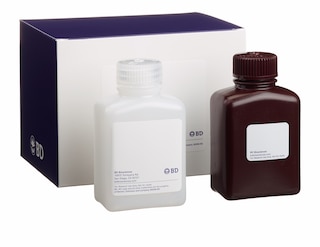-
Reagents
- Flow Cytometry Reagents
-
Western Blotting and Molecular Reagents
- Immunoassay Reagents
-
Single-Cell Multiomics Reagents
- BD® OMICS-Guard Sample Preservation Buffer
- BD® AbSeq Assay
- BD® OMICS-One Immune Profiler Protein Panel
- BD® Single-Cell Multiplexing Kit
- BD Rhapsody™ ATAC-Seq Assays
- BD Rhapsody™ Whole Transcriptome Analysis (WTA) Amplification Kit
- BD Rhapsody™ TCR/BCR Next Multiomic Assays
- BD Rhapsody™ Targeted mRNA Kits
- BD Rhapsody™ Accessory Kits
-
Functional Assays
-
Microscopy and Imaging Reagents
-
Cell Preparation and Separation Reagents
-
- BD® OMICS-Guard Sample Preservation Buffer
- BD® AbSeq Assay
- BD® OMICS-One Immune Profiler Protein Panel
- BD® Single-Cell Multiplexing Kit
- BD Rhapsody™ ATAC-Seq Assays
- BD Rhapsody™ Whole Transcriptome Analysis (WTA) Amplification Kit
- BD Rhapsody™ TCR/BCR Next Multiomic Assays
- BD Rhapsody™ Targeted mRNA Kits
- BD Rhapsody™ Accessory Kits
- United States (English)
-
Change country/language
Old Browser
This page has been recently translated and is available in French now.
Looks like you're visiting us from {countryName}.
Would you like to stay on the current country site or be switched to your country?
.png)
.png)
Regulatory Status Legend
Any use of products other than the permitted use without the express written authorization of Becton, Dickinson and Company is strictly prohibited.
Preparation And Storage
Recommended Assay Procedures
This antibody conjugate has been tested by intracellular immunofluorescent staining ( ≤ 1 µg/million cells, using the Cytofix/Cytoperm™ Kit, Cat. no. 554714) with flow cytometric analysis to assure specificity and reactivity.
Product Notices
- Since applications vary, each investigator should titrate the reagent to obtain optimal results.
- Please refer to www.bdbiosciences.com/us/s/resources for technical protocols.
- Caution: Sodium azide yields highly toxic hydrazoic acid under acidic conditions. Dilute azide compounds in running water before discarding to avoid accumulation of potentially explosive deposits in plumbing.
Companion Products


The 1D4B antibody recognizes CD107a which is also known as, Lysosome-Associated Membrane Protein 1 (LAMP-1). CD107a is one of the two major glycoproteins in lysosome membranes that provide useful markers to distinguish lysosomes from other organelles. CD107a may play a role in the lysosomal degradation of certain molecules. Mouse CD107a is a type I transmembrane glycoprotein. It consists of a 40-kDa core protein which is heavily glycosylated to form heterogeneous mature glycoprotein of 110-140 kDa. It is principally expressed in epithelial cells and macrophages in a variety of organs. Following activation, CD107a is relocated to the surface of some lymphocytes, macrophages, epithelial cells, endothelial cells, platelets, and tumor cells. Cell-surface CD107a may participate in intercellular adhesion and adhesion to the extracellular matrix. Cell surface CD107a expression can serve as a useful marker for cytotoxic NK and CD8+ T cells, as well as, some malignant tumor cells.

Development References (3)
-
Arterburn LM, Earles BJ, August JT. The disulfide structure of mouse lysosome-associated membrane protein 1. J Biol Chem. 1990; 265(13):7419-7423. (Biology). View Reference
-
Chen JW, Chen GL, D'Souza MP, Murphy TL, August JT. Lysosomal membrane glycoproteins: properties of LAMP-1 and LAMP-2. Biochem Soc Symp. 1986; 51:97-112. (Biology). View Reference
-
Chen JW, Pan W, D'Souza MP, August JT. Lysosome-associated membrane proteins: characterization of LAMP-1 of macrophage P388 and mouse embryo 3T3 cultured cells. Arch Biochem Biophys. 1985; 239(2):574-586. (Immunogen). View Reference
Please refer to Support Documents for Quality Certificates
Global - Refer to manufacturer's instructions for use and related User Manuals and Technical data sheets before using this products as described
Comparisons, where applicable, are made against older BD Technology, manual methods or are general performance claims. Comparisons are not made against non-BD technologies, unless otherwise noted.
For Research Use Only. Not for use in diagnostic or therapeutic procedures.